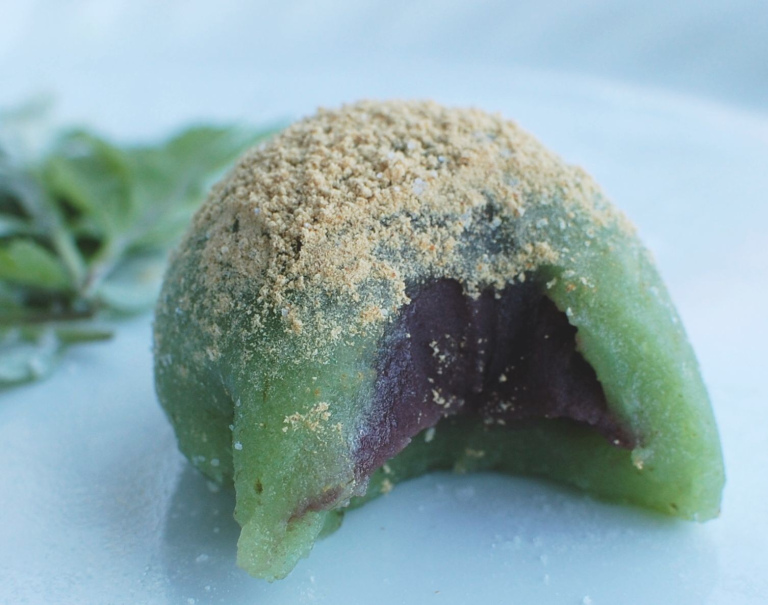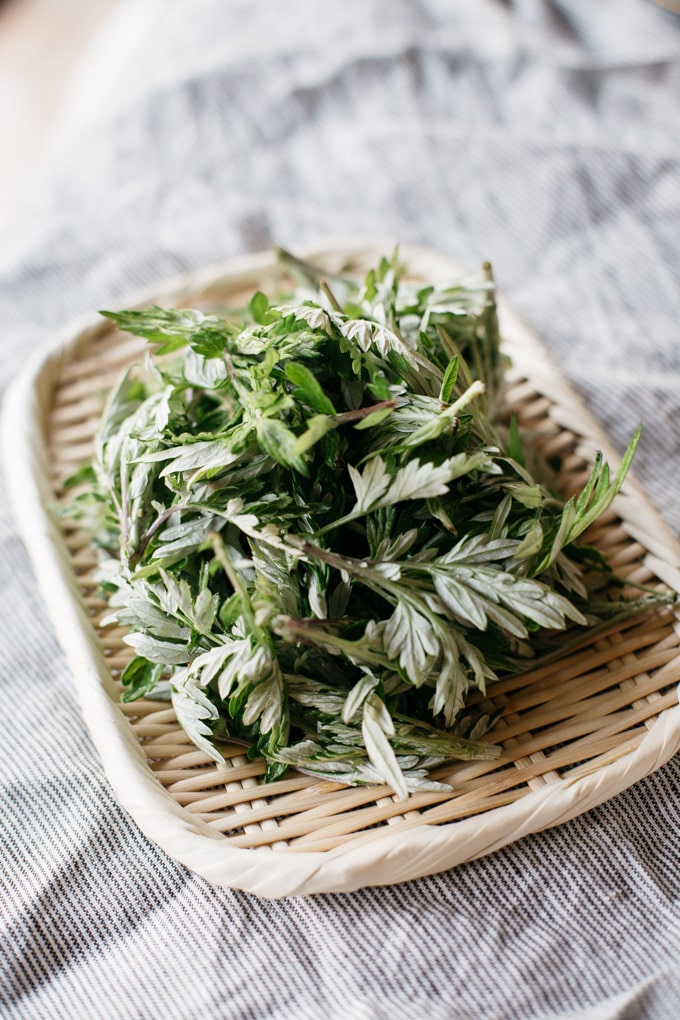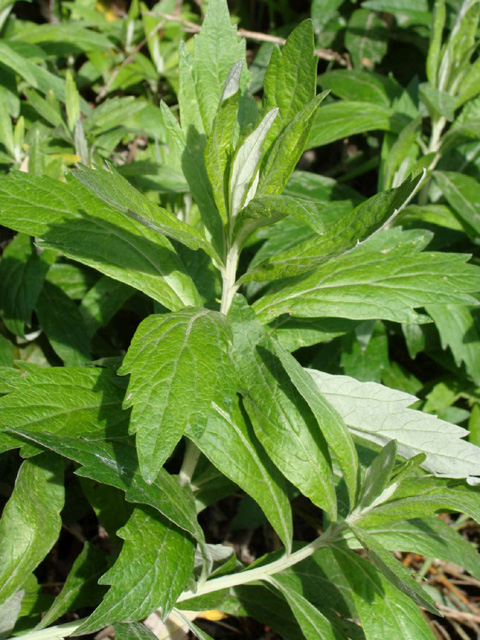The other day I went to Tokyo Central, a Japanese store where I can pick up some of our favorite things – gyoza, korroke, curry rice, raw fish for poke, sushinoko (sushi rice seasoning), shiso, natto, etc. This time, I picked up a bag of Yomogi Dango with Kinako, an irresistible sweet with childhood memories attached for me. It has a distinct and lovely fragrance, so I looked at the ingredients and one of the items listed was “mugwort”. It’d been a while so I started wondering where I knew that word from. Was it a lichen? Some kind of fungus? I knew it from something local we’d come across before.

When I looked it up, I realized it’s a plant that grows locally here in Southern California we see it often along the trails. I knew of it as the anti-dote to poison oak, and the dead dry leaves are excellent for tinder to help start a fire if ever needed. But I don’t think I’ve ever smelled it on the trail. I wonder if it will smell like my favorite dango? The Japanese variety looks smaller.

Japanese often add elements from nature to food for their scent – shiso, cherry leaf, etc. It makes food not only enjoyable, but memorable and connected to a locale where it grows. For me, it was a “science of relations” moment making a connection from a favorite childhood scent and food to a local plant we see along the trails. I’ll definitely smell it next time I see it!
There’s quite a bit of folklore about one variety of Mugwort according the UCI Natural History page:
Leaves were used by the Indians in treating nervous and spasmodic affections. Medicine was made by simmering leaves in water and was used for stomachache, headache, poison oak and to heal wounds. Good for female complaints, good for rheumatism and gout. A decoction of the leaves was taken after childbirth to promote blood circulation. (Heizer and Elsasser 227). At the time of the first Spanish voyages of discovery along the southern California coast, beginning with Cabrillo in 1542, the Santa Barbara Channel Islands, mainland coast and adjacent interior mountains and valleys were occupied by about 15,000 people who later became known as the Chumash. Among the medicinal plants used by these Indians was Artemisia douglasiana which was made into a tea to soothe poison oak rash. This plant was also used to cauterize wounds using small cones of dried mugwort leaves, which were placed on the skin and ignited. This method was one of the most important Chumash remedies, along with seawater, datura, bloodletting and red ants. (Timbrook, J. “Virtuous Herbs: Plants in Chumash Medicine”. Journal of Ethnobiology, Winter 1987, 171-180). Probably several species of Artemisia were used in making arrows. The Luiseno, Indians who inhabited what is now northern San Diego County and inland through a portion of Riverside County to the San Jacinto Mountains, regularly made their inferior arrows from A. douglasiana which may also be found in Cahuilla territory. A. dracunculus would also have provided shaft material. (Bean & Saubel 42). Mugwort is reported to have a large quantity of chemical antifeedants called terpenes which inhibit digestion, and thus are unpalatable to insects. (Native Plant class by Dave Bontrager, Spring 1985). Some of the Artemisias, including this one, have been shown to help decrease the ill effects of lipid peroxides (rancid fats) on the liver. In dealing with the American diet and our strange reliance on processed foods, you must remember that fat and oil preservatives and antioxidants don’t change the existing rancidity, they just prevent more from happening and your finely tuned nose from detecting what has already happened. (Moore, Medicinal Plants of the Desert and Canyon West 20). The Encyclopedia of Arts & Science (1743) states–“An infusion of the stalks and flowers of Mugwort is recommended to old people for its mildness, instead of tea.” A modern source mentions Mugwort being used as a common tea in Cornwall, England. Mint or Pennyroyal may be added. Mugwort tea should not be steeped long. An old European legend held that pillows stuffed with this aromatic herb would reveal one’s entire future in dreams. (Meyer 173, 230). There is no reference in Meyer to the Latin name of the plant called Mugwort. (my comment). The medicinal properties of mugwort are both physical and spiritual and it is a powerful medicine plant throughout its range. The plants were often gathered together and tied in a bundle to form a “smudge stick,” which was used for cleansing and purification, also to carry prayers. Leaves were used in pillows to create good dreams and necklaces were made of mugwort leaves to prevent dreaming of the dead. (Barrett and Gifford 1933). Handlers of the dead would smear the leaves on their bodies so the ghosts of the dead would not haunt them. (Stevens, Michelle L., “ETHNOECOLOGY OF SELECTED CALIFORNIA WETLAND PLANTS” FREMONTIA, A Journal of the California Native Plant Society Vol. 32, No. 4 October 2004 pp. 7-15).
Here’s a fun video of a man who is passionate about making the mochi used in dango, I’ve never seen it done this fast, but they used to make it fresh like this in the street in Mitaka where my extended family lives and it tastes soooo good!
